‘The best rooms reflect their owners’: Luke Edward Hall’s five design principles
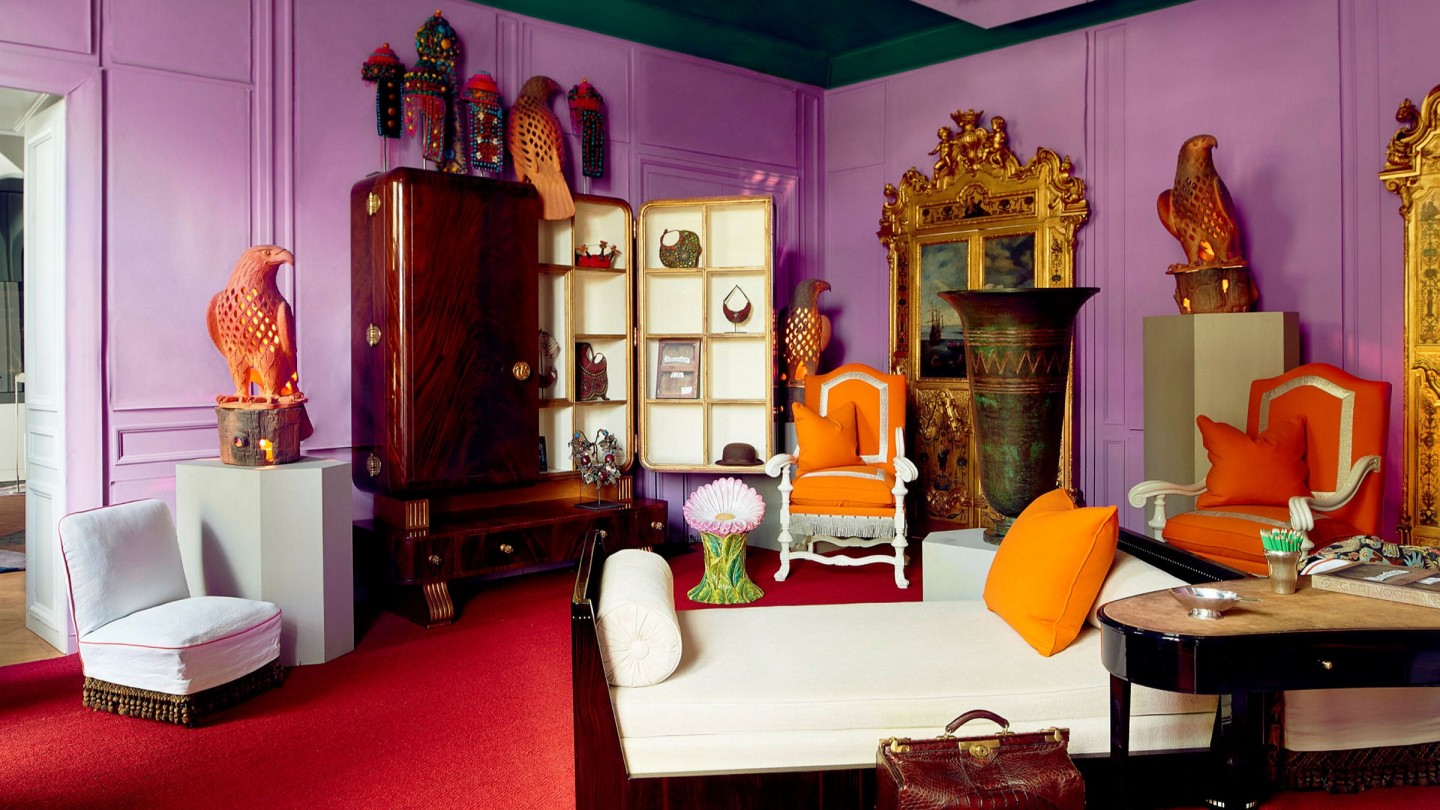
Roula Khalaf, Editor of the FT, selects her favourite stories in this weekly newsletter.
When it comes to decorating, I’m not one for rules. The interiors I appreciate the most are ones that express their owners’ tastes and interests. Plus, decorating isn’t like baking a cake: there aren’t steps to follow. Above all, decorating one’s home should be about having fun.
Saying this, I do believe that some basic principles can be extremely helpful. As a designer myself, I often turn to the mantras penned by the long-dead people whose work I admire and take inspiration from: the American decorators Nancy Lancaster and Dorothy Draper, say, or the English designer David Hicks. Draper in particular wrote and published lots of practical advice, but her words don’t feel like rules because they’re full of zest and humour — and I cannot abide a humourless rule.
At the FT Weekend Digital Festival last week, I spoke with Nathan Brooker, editor of House and Home, and put forward my own five design principles. These are the guidelines I offered, and I hope they provide a simplified foundation of what I find to be good design.
1 Try to master the art of the mix

Nancy Lancaster had seven interior design principles. Among them, she wrote: “I never think that sticking slavishly to one period is successful.” She likened the process of creating a room to mixing a salad, and I concur. Interior design is not like baking a cake, but it is about bringing ingredients together — a few bits of this, a pinch of that — to create a harmonious end result. Try that approach with a chocolate soufflé, though, and you’ll end up with a hockey puck.
See the work of Belgian designer Gert Voorjans for inspiration. In 2016, Voorjans was invited to participate in the AD Intérieurs exhibition at La Monnaie de Paris. He created a bureau d’homme suggesting a journey from Tibet to Paris via Venice. The selection of furniture and objects symbolised each stage of the odyssey and included Venetian antiques as well as Art Deco and 18th-century French pieces. The mix is dazzling, yet no individual piece screams for attention.
I enjoy mixing furniture from different decades and from different countries at home and in my work because I am greedy and I fancy a bit of everything. Plus, I crave the magic of contrast, the tension created when very different objects are placed side by side. Whack a gleaming blue-and-white Chinese vase on top of an Italian Rococo bracket and — wham — both objects sing in their loveliest voices.
In my Cotswolds cottage, faded English chintzes and bits of Italian gilt wood sit side by side with the odd chinoiserie mirror and inexpensive, painted French piece. This kind of mix is the essence of English country style — the look that was made popular by Colefax and Fowler from the 1930s. Our version is a much more humble and cottagey take (there’s no space for swagged curtains, much to my chagrin).
As well as furniture, well-designed interiors should include a lovely and varied mix of materials and patterns. The American decorator Billy Baldwin was particularly good at achieving this. His rooms featured a balanced selection: simple brass bookcases, plain and inexpensive off-white linen or ticking on a tailored sofa, dark leather covering an antique desk chair, bleached wood, glossy white lacquer and a dash of animal print on a cushion or rug. His rooms feel masculine, feminine, classic, chic: gloriously stylish, essentially.
2 Do not be afraid of the paint chart

Colour is a kind of life force: I surround myself with it and in return it buoys me up and gives me joy. So, naturally, I apply it liberally to the rooms I spend time in. I don’t have anything against white walls or neutral fabrics. White walls suit certain spaces and speak of serenity and freshness. But I dislike rooms decked out completely in white, grey and beige.
I’m sure you know the kind of unholy look I’m alluding to: it’s one favoured by developers of “luxury” properties (although this word seems to have lost a lot of its meaning). To me, those rooms look as if the life has been drained right out of them; they are cold and hard and devoid of personality. Usually a token effort will have been made to bring in some colour: the palest of pale-blue cushions, or a throw in some funereal shade of mauve.
These are not the sort of colours I’m talking about. I want people to embrace proper, clear colours: daffodil yellow, poisonous green, dusty lavender and sunset peach, acid pinks and oranges. Look to the antiques dealer and former actor Peter Hinwood for inspiration: his rooms always feature enchanting combinations of furniture and objects set against ravishing wall colours.
Like Voorjans’s bureau with its purple walls and red carpet, sensational colours blast away fustiness and provide antique furniture with a fantastical backdrop. (Black and white are the best moderators: to create maximum zing, I like to place ebonised or white lacquered furniture against brightly coloured walls.)
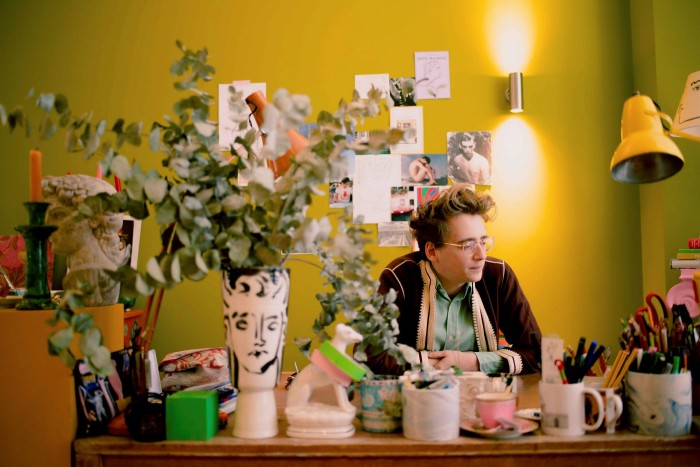
I often sprinkle my columns with the phrase “a spritz of lime”, and in fact a citrusy squeeze may be the last thing you add to your salad. (Sorry: still on the salad metaphor.) It’s the same with a room. A harmonious mix is key, yes, but not too harmonious. I always want a dash of something extraordinarily electric.
The electricity I’m after is usually provided by extra shots of colour. Note in Voorjans’s bureau the armchairs upholstered in tangerine with their glossy white-painted frames, and the matching orange cushion placed on the white-upholstered day bed. This dose of orange is a slap in the face, in the friendliest of senses.
3 Think big and small: oversized furniture and accessories make a room

I believe that rooms look best when populated with large pieces of furniture. Even small rooms. Go for the biggest sofas you can, and proper, comfortable armchairs. There’s nothing worse than a too-small armchair. Contrast is key, again, however: I also love spindly side chairs and tables.
At the other end of the scale spectrum, accessories really do make a room. I rather despise the term “accessories”, but I can’t think of a better one. Objet is even worse, although I’ve probably used it in the past. All I really mean is the detritus of life: layers and layers of little things, both useful and beautiful.

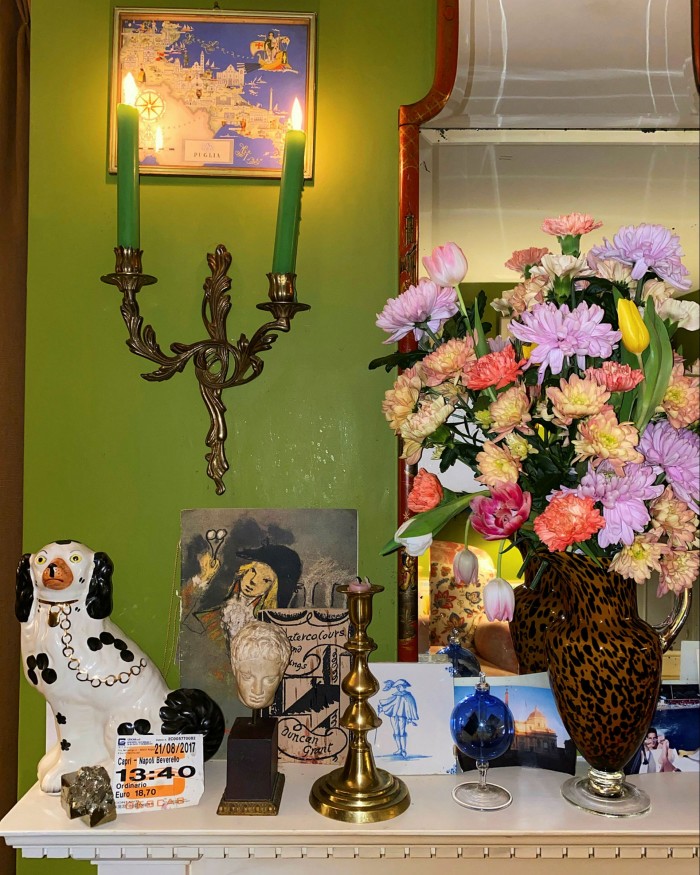
A room needs a metric tonne of books, obviously. The American filmmaker John Waters has rather a strict rule about what you must not do if you ever go home with somebody and they don't have any books — and I quite agree.
Flowers, odd bits of ceramic and glass, random pamphlets and disposable-camera holiday snaps, postcards from friends and pictures drawn by my four-year-old niece, a really excellent bit of driftwood picked up from a beach in Sicily (and now acting as a kind of necklace for a bust of David I have in my loo) — these are the things that I’d grab from our cottage if it caught fire.
4 Have a sense of humour
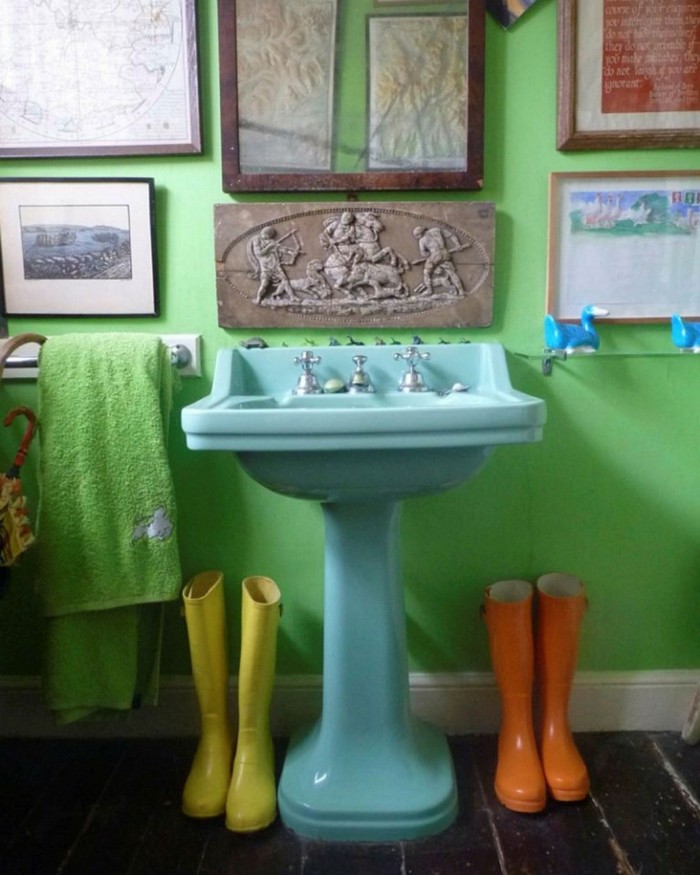
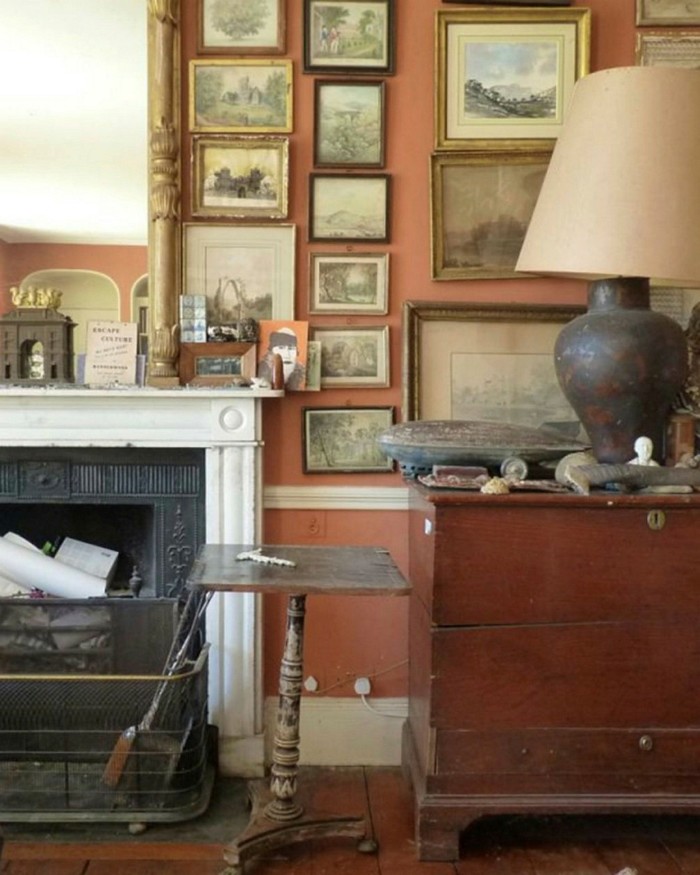
I want rooms filled with the signs of lives well lived. A broken platter here, stapled back together, a blanket over there, half-chewed by the dog. When we have guests over (in better times) I know a swill of champagne will find its way from its glass to a pile of favourite books, cascading down beloved covers along the way, but would I have it any other way? Of course not.
I’m not saying be messy for the sake of it. It’s more about a state of mind and not designing an interior to be a kind of showpiece. I don’t believe in being too obsessed with tidiness and things matching and looking perfect. (There is something highly irritating about the concept of perfection.) I like a bit of symmetry as much as the next trinkets-obsessed control freak, but let’s also embrace disorder.
Give me wonky lamp shades and pictures hung in a layout that doesn’t quite work, with frames squished into odd spaces. For inspiration, see the fantastic homes put together by the gardeners Julian and Isabel Bannerman, such as their former home, Trematon Castle in Cornwall.
I love looking at pictures of the Bannermans’ rooms, even more than their gardens, perhaps, because they are always stuffed with fabulous, wonky detail: a sword in a vase in a fireplace; lime-green towels and orange Wellington boots; mantelpieces overflowing with pots; flags and prints and pictures strung up all over the place, and flowers, of course, flowers everywhere.
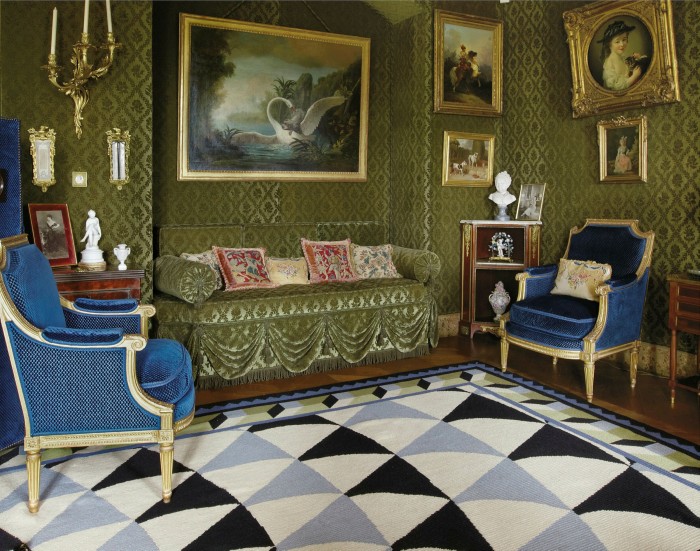
I love the idea of serious, distinguished antiques, provenance and patina, but I also love interiors with a sense of wit and nonchalance about them. I want irreverence, I want playfulness. It’s most fun when the serious and the spirited combine. One of my favourite rooms ever, the drawing room in the Paris apartment of Princess Caroline Murat Guest and Raymond Guest, was created in the 1960s by the Cuban architect and designer Emilio Terry, a hero of mine known for his take on the Baroque.
It features walls, furnishings and curtains made from sumptuous olive-green velvet along with ormolu candle sconces and gilt picture frames. From the skirting up, we’re in the 18th century, yet the rug zaps us into the 1960s. It’s an exceptional piece: a geometric spiral of triangles surround a pair of interlocking swans in shades of grey, off-white and pale blue. The decoration is appropriate, but it doesn’t take itself too seriously. Balance, again, is vital.
5 Forget trends: focus only on things that you love
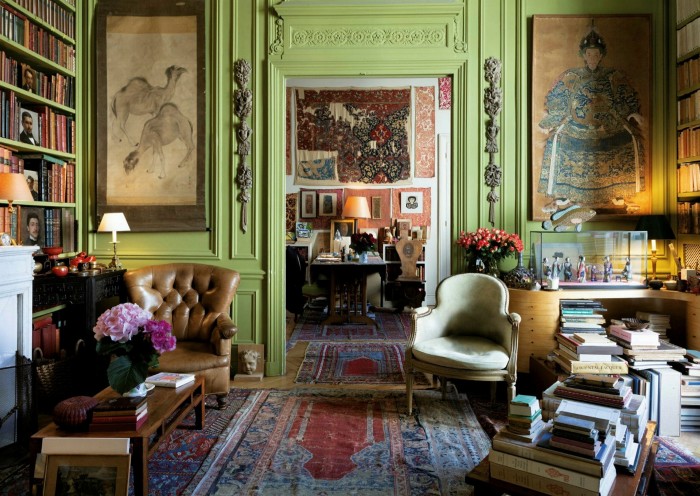
This point is very much a continuation of my previous ones. The best rooms reflect their owners, so collect the things you fall in love with no matter when or where they are from, and never worry about them fitting together. As my friend the interior designer Beata Heuman says in her new book Every Room Should Sing: “There's a lot of joy in expressing one's individuality. It is freeing. It can be exhilarating.”
The late, great illustrator and collector Pierre Le-Tan’s Paris apartment springs to mind — another favourite interior — in a picture I’ve seen of his desk. Among his enchanting mix of chic and worldly objects, a toy troll stares out — one of those ones with giant googly eyes and a mound of white marshmallow hair. I’m sure this troll must have had a fascinating story to tell. I’m just glad it was able to enjoy prime place alongside Le-Tan’s Cocteau sketches and ancient classical fragments. (Pieces from Le-Tan’s collection were sold at Sotheby’s in Paris last week.)
In the end, you must trust your instincts. After all, rules, principles, mantras — whatever you want to call them — are there to be broken. Apart from this one: forget about trends!
House & Home Unlocked
FT subscribers can sign up for our weekly email newsletter containing guides to the global property market, distinctive architecture, interior design and gardens.
Sign up here with one click
Video on demand tickets to the FT Weekend Digital Festival are still available, giving access to all the talks at the three-day event. To purchase a pass, visit ftweekend.live.ft.com
Follow @FTProperty on Twitter or @ft_houseandhome on Instagram to find out about our latest stories first
Comments